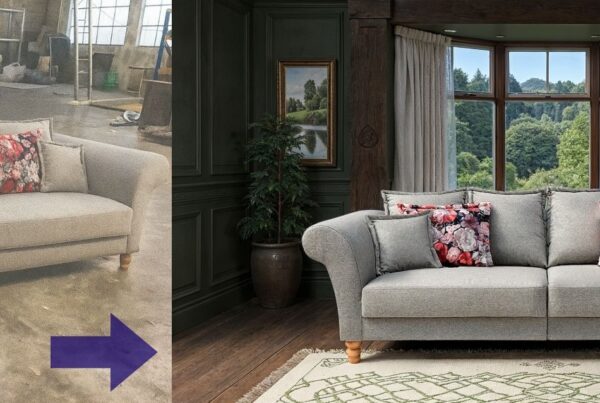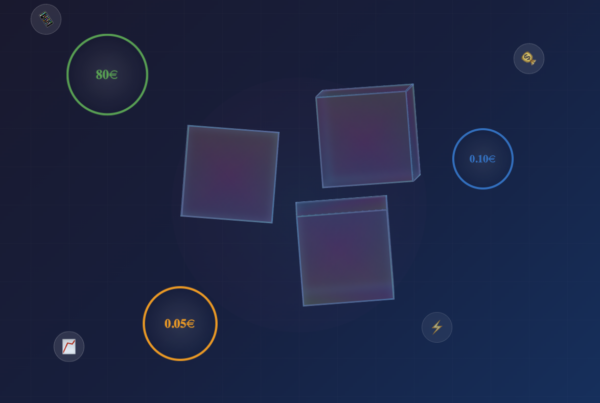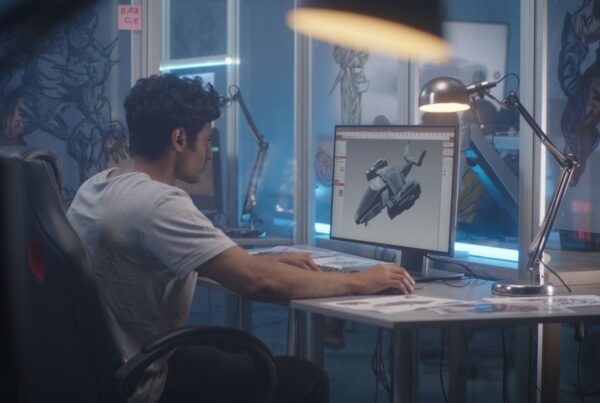3D configurator software is no longer an option. This revolutionary technology takes plain product photography and turns it into fully interactive 3D experiences, allowing shoppers to explore, tailor, and visualize in real time. From driving engagement to lower return rates, 3D configurators are changing the way e-commerce brands turn browsers into buyers. With advances in AI-driven 3D modeling and Web AR, even small business can today deliver top-end digital experiences at a fraction of the price tag of traditional 3D rendering. If you’re selling furniture, fashion, or tech, implementing a 3D product configurator on your platform isn’t merely a design upgrade—it’s a performance booster. Here, we’ll walk through the entire process—from photo to interactive model—and illustrate how tools like MAZING simplify, scale, and drive impact for today’s e-commerce brands.
1. What is 3D configurator software and why it matters
Forget flat product images—3D configurator software is here to change the way people buy online as an immersive, interactive, and all-around game-changing experience. Such software allows customers to explore, personalize, and spin products around in 3D, often from their browser or mobile phone. Instead of viewing a dozen static images, they can interact with the product as they would when they are visiting an offline store. The result? Less uncertainty, more confidence, and a smoother path to purchase.
For e-commerce companies, this technology is not just a nice-to-have—it’s a business differentiator. In filling the sensory gap between screen and product, configurators give customers that “try before you buy” feeling. Such digital experience not only looks good—it pays off. Think longer site stays, better engagement rates, and ultimately, more conversions. Especially when combined with Web AR capabilities, allowing customers to visualize the product in their own physical environment using their phone camera.
This is particularly crucial in an environment where customers’ attention is at a high cost. With ad prices going up and bounce rates growing, grabbing—and holding on to—attention is priceless. That’s where 3D product visualization enters. It’s not merely pretty pictures; it’s storytelling through interaction, and it converts passive browsing to active decision-making.
It’s no surprise that those companies that are implementing 3D/AR configurators are seeing genuine returns. The blend of personalization and realism does not merely wow customers—it makes them buy and reduces returns. In simple terms, 3D configurators turn hesitation to action.
2. The evolution from traditional 3D modeling to AI-powered creation
Not many years ago, developing a 3D product model was a costly business. You needed a team of designers, expensive software, rounds and rounds of revisions that took weeks to get through, and a big budget. That was the high-end methodology that was the domain of high-end companies—until now. With 3D modeling using AI, the game is altogether different.
It takes 2–3 product images to get started today. Software like MAZING processes these images using AI to create incredibly accurate 3D models at a fraction of the time. No more endless retouching or tedious manual sculpting. The heavy lifting is done by the software, and 3D product digitization becomes not only faster, but also scalable—even to small businesses or companies that have enormous catalogs.
This shift also renders personalization no longer an extra cost. Brands can offer interactive 3D configurators on their websites without sacrificing their bottom line or compromising on quality. AI and automation together have driven down the cost of entry, enabling companies to showcase products that were once the exclusive domain of industry leaders.
And the best part is, not only is it faster, but it’s also more flexible. Want to change things around? AI applications make the feedback cycle easier. Want to deploy your model on several channels? Many configurators are now built to accommodate multi-channel use, from websites to marketplaces to mobile apps.
AI made it possible to create a world where high-quality, immersive 3D product experiences are affordable, accessible, and extremely impactful.
3. How a product photo becomes an interactive 3D model
It might sound like science fiction to take a static product image and convert it to an interactive 3D model, but it’s happening right now—and it’s as easy as it can be. Platforms like MAZING take three regular product images, usually front, side, and top, and run them through AI engines to produce high-quality 3D models. No hardware, no 3D design team, no learning curve.
It’s all about automation. Once you upload images, the software reads textures, dimensions, and angles to build an exact virtual duplicate of the product. This can then be placed into a 3D configurator, and customers can spin, zoom, and personalize it directly on the product page. For those who would like to take it one step further, it’s immediately ready to use for Web AR, and customers can place it in their living room or office using their phone.
This sort of visual content workflow is the dream of every eCommerce team. It’s rapid—often days instead of weeks. It’s budget-friendly—in relation to 3D modeling or product photography. And it’s versatile—ideal for businesses that deal with enormous inventories or rapid product launches.
Even better, you can use the 3D model repeatedly throughout marketing channels. Create silo images for your e-commerce site, lifestyle renders for social media, or detailed images for retail partners. This makes product visualization software not just an instrument—but a growth driver for any e-commerce company.
Test MAZING 2D to 3D AI Tool Today!
4. Key features to look for in a 3D configurator software
Not all 3D configurator software is made the same—so when you’re searching, knowing what to look for makes all the difference. Right at the top of the list? Seamless integration. You’re wanting one that integrates nicely into your current tech stack—whether you’re on Shopify, WooCommerce, or something customized. If you need to get a dev team to integrate it, you’re doing it wrong.
One of the non-negotiables is web AR support. This feature brings products to life in your customer’s physical world—straight from their phone or tablet. It’s a conversion driver, and it slashes returns by allowing buyers to see the true size, fit, and appearance. Brands that use augmented reality product views drive more satisfaction all around.
Let’s talk about security. Your 3D models are digital property, so find a configurator that offers anti-theft protection and encryption. A good website should keep your content safe from competitors or bad actors who would steal your files and use them on another site.
Lastly, don’t underestimate analytics. Good 3D software does not just show you your product—it tracks how users are interacting with it. Which views are driving cart adds? How long users are interacting with the model? This enables you to fine-tune your strategy and prove ROI to stakeholders.
Among all the choices, the best configurators get the right blend of power, flexibility, and usability. When you come upon one that does all three, you’re not just adding appearance—you’re opening up smarter selling.
5. The MAZING approach: From 2D photos to 3D/AR in 3 steps
MAZING revolutionized 3D configurator software to be quick, simple, and scalable. Their entire process happens through three easy steps: upload, approve, and embed. That’s all it takes to convert plain product images to powerful 3D/AR experiences.
It all starts from something that all brands now own: product images. 2–3 good images are all you require. You upload them to the MAZING platform and let powerful AI do the work. The system analyzes angles, material, and dimensions to build you a ready-to-use 3D model—all without manual modeling or complicated setup.
After you’ve created your model, you enter the approval stage. This is where MAZING really shines. The platform’s interface is made to be non-technical, so any team member can review, suggest edits, or approve the model all with a few easy clicks. It’s speedy, visual, and completely streamlined—condensing what would take weeks to achieve to hours or days.
The final step? Placing the model on your site. MAZING gives you simple copy-paste viewer code that integrates easily with virtually any CMS or e-commerce site. It’s also compatible with marketplaces and supports Web AR, enabling customers to visualize products in their own environment on phone or tablet. Bonus: all this is GDPR-friendly, quick-loading, and mobile-compatible.
This three-step workflow simplifies scaling for teams. Whether you are launching one product or revamping an entire catalog digitally, the same process is undertaken—one that is easy, rapid, and efficient. MAZING bypasses technical roadblocks, accelerates go-to-market, and enables you to deliver high-end visual quality without the high-end workload.
6. Integration made simple: Adding 3D configurators to your website
It’s not necessarily how it looks that makes 3D configurator software so stunning these days—it’s how simple it is to integrate it into your existing setup. With MAZING, integration is plug-and-play. No development teams. No hassles. Just easy copy-paste embed code that drops your interactive 3D or AR viewer right onto any site or platform.
Whether you’re working on Shopify, WooCommerce, BigCommerce, or even a custom CMS, the viewer adapts automatically. Yes, even Amazon or OTTO marketplaces are supported, so your product images are always consistent everywhere you sell. That sort of flexibility matters to brands that sell everywhere—and it’s all powered from a zero-maintenance, cloud-based setup.
MAZING also offers plugins for leading platforms, simplifying installation even more. Your product pages are fully immersive and interactive in just clicks, enabling customers to explore, configure, and place products within their own environments using Web AR. It’s as easy as updating your storefront overnight without any redesign.
One more huge win? GDPR-compliant hosting. Your customers’ information is protected, and your 3D content is served securely and swiftly from shielded European servers. This makes MAZING the ideal solution for companies regulated by rigorous data privacy law.
Simply put, integration isn’t just possible—it’s easy. MAZING eliminates the friction of setup so you can get on to the good stuff: maximizing engagement, reducing returns, and driving conversions through memorable 3D product experiences.
Step-by-Step Guide: How to Convert a 2D Image into a 3D Model with AI
There has never been an easier time to convert a 2D image into a 3D model, with AI tools on the job. No matter which one you choose, Mazing, Meshy AI, or Sloyd AI, the process is easy yet effective. The following is a step-by-step guide to get started:
Step 1: Choose the Right AI 3D Model Generator
The ideal tool for AI 3D model design will depend on your needs. Mazing is ideal for online stores and businesses due to its frictionless 3D commerce integration. If you would prefer more control over the design, then Sloyd AI comes with parametric modeling and is suitable for game items and digital assets.
Step 2: Upload a 2D Image or Multiple Angles
Once you have chosen your tool, upload a 2D image of the object that you want to transform. Some platforms allow several images from different angles, making it more accurate. AI scans the depth, texture, and structure of the image to recreate a 3D model.
Step 3: AI Processing and Model Generation
The AI system will take a few seconds to a minute to process the image and create a 3D model. Advanced software like MAZING AI uses machine learning-based algorithms to predict missing data, delivering an improved and high-quality result.
Step 4: Enhance the Model with Designers
If you require hyper-realistic 3D images, you can utilize Mazing’s AI model enhancement process to improve textures and meshes. As AI is not perfect, this step is recommended if you want to use the models for e.g. product configurators.
Step 5: Adjustments & Export the 3D Model
Export in a format like STL, OBJ, or glTF, depending on what you’re going to use it for—3D printing, gaming, or augmented reality applications.
7. Real examples: Brands succeeding with 3D configurator software
It’s simple to talk about the potential of 3D configurator software, but it’s another thing to see it happen—and that’s where MAZING’s case studies come in. Brands from different industries are using 3D and AR not only to enrich their product pages but also to drive concrete, measurable outcomes.
Take Modus Furniture, for example. As a B2B distributor, they needed to showcase their large product catalog without the cost and square footage of showrooms. With MAZING’s configurators and web AR viewers, they were able to virtually display their entire product inventory. The result? Better retail partner relationships, reduced showroom expense, and a whopping 50% of 3D viewers adding to cart within just two minutes.
And then there’s Art-Mind, a direct-to-consumer brand that saw their +42% uplift in conversion when they incorporated MAZING’s 3D experience onto their top-selling products. A single product generated over €6,000 extra revenue, and their CEO Tobias Düll even had to end A/B testing early because of the dramatic uplift – “we are losing money” were his exact words.
And that’s not all. Retailers like Affordable Furniture used AR within their stores to drive a 700% increase in web sales, all by giving customers cards that linked to MAZING-enabled product views. These are not isolated successes—they are proof of the difference that can be made by 3D/AR product visualization at multiple touchpoints.
From e-commerce websites to B2B catalogs, MAZING allows brands to turn engagement into action—and it’s paying off.
8. How 3D configurators impact conversion rates and returns
Not only does the inclusion of a 3D configurator on your product pages enrich the buying experience, it transforms it. This technology dispels uncertainty, increases buyer confidence, and achieves results that can be measured by brands: more conversions, fewer returns, and improved customer satisfaction.
They are working from flat images and imagination when it comes to regular eCommerce. When they are able to touch and inspect a 3D model, zoom and spin it around, and even
personalize choices, that imagination becomes reality. Add Web AR to the mix, and they are able to place the product within their own environment—a couch on the living room floor or a lamp on their office desk. That live preview takes the guesswork out and makes decisions instantaneously.
It is no surprise that businesses using MAZING are seeing 40–45% increases in conversion. In one study, people who looked at a product in 3D/AR had 42% more purchase intention than those who looked at regular images. Better yet, returns are lower—MAZING customers are seeing drops of as much as 15%, thanks to clearer expectations and fewer surprises after the sale.
Beyond sales and returns, configurators are driving time on site, one of the most important measures of SEO and user engagement. Customers are not merely clicking—they are engaging, personalizing, and bonding with products on another level.
Bottom line? 3D and AR visualization builds trust, reduces friction, and allows customers to purchase confidently. It’s not simply eye candy—it’s both an experience enhancer and a revenue booster.
Test MAZING 2D to 3D AI Tool for Free






